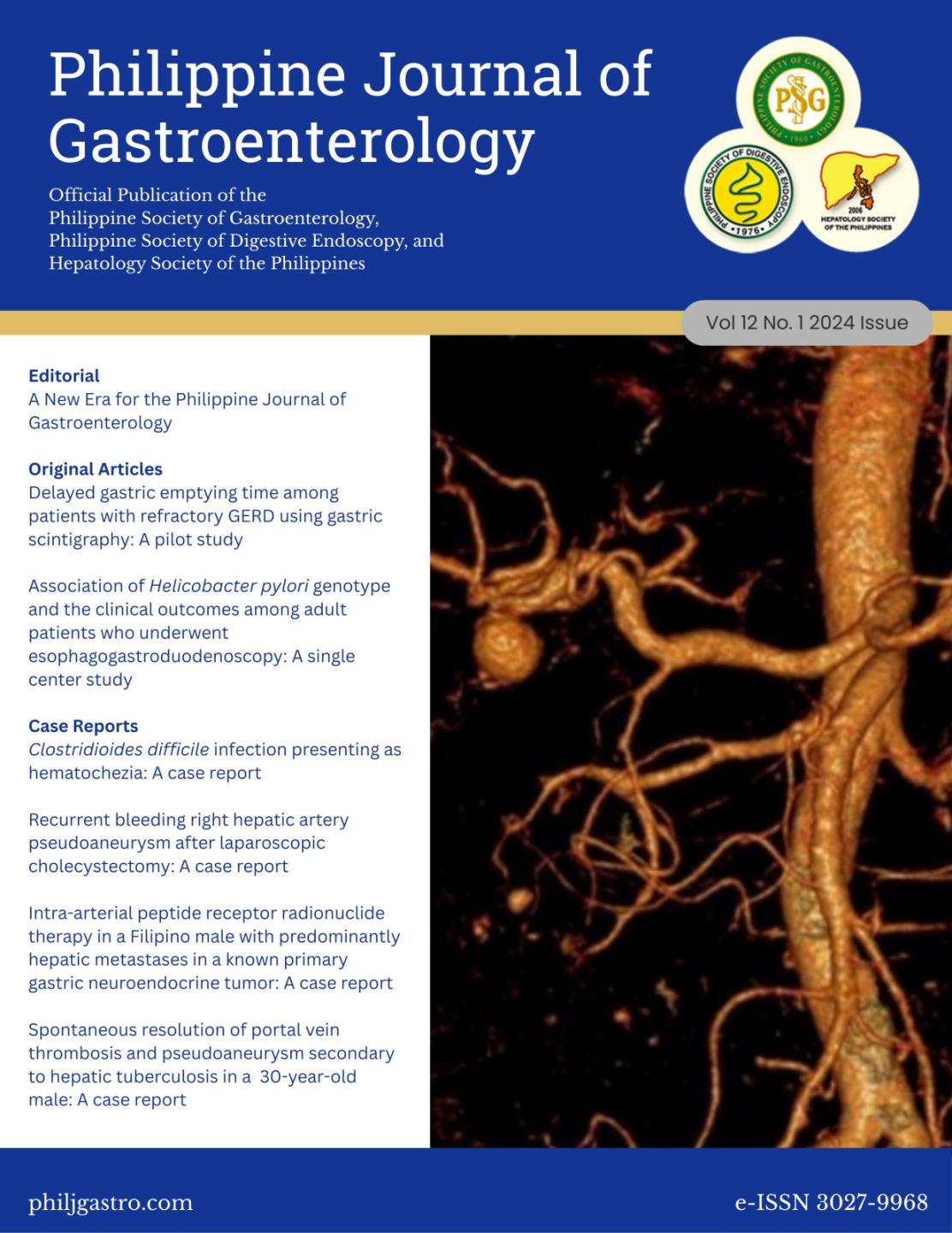Intra-arterial peptide receptor radionuclide therapy in a Filipino male with predominantly hepatic metastases in a known primary gastric neuroendocrine tumor: A case report
Keywords:
Neuroendocrine tumor, Lutetium-177 DOTATATE, Intra-arterial, PRRTAbstract
Significance: Neuroendocrine tumors (NETs) express Somatostatin receptors (SSTR) which allow for diagnostic imaging using Gallium-68 DOTA-0-Tyr3-Octreotate (DOTATATE) Positron Emission Tomography-Computed Tomography (PET-CT) and Peptide Receptor Radioligand Therapy (PRRT) using Lutetium-177 (Lu-177) DOTATATE. Standard intravenous PRRT (IV-PRRT) is an established treatment modality for well-differentiated neuroendocrine tumors. However, this may be limited in large bulky masses. Thus, the intra-arterial route has been utilized in other countries. This is the first recorded use of intra-arterial PRRT (IA-PPRT) administration in the country.
Clinical Presentation: This is a case report of a 59-year-old man, with known gastric neuroendocrine neoplasm, Grade II, presenting with persistent large SSTR-expressing hepatic lesions. He is a post-pyloroantral segment resection patient with trans-arterial chemoembolization in 2017. He had chemotherapy in 2018, with 4 cycles of IV-PRRT from 2018 to 2019 and 2 fractions of tomotherapy in 2022.
Management: The patient was referred again for PRRT due to progressive metastatic hepatic lesions. IA-PRRT was done in October 2023 followed by IV-PRRT in February 2024. There were no gastrointestinal adverse events or hematologic or nephrologic toxicities during the course of his admissions. The post-treatment scan of the IV-PRRT demonstrated a decrease in intensity of the hepatic lesions reflecting the response to the IA-PRRT. A follow-up Ga-68 DOTATATE PET-CT scan in February 2025 showed a decrease in size and SSTR-overexpression, consistent with good and sustained treatment response from the IA-PRRT and IV-PPRT.
Recommendation: Intra-arterial PRRT is a non-conventional alternative means of administering Lu-177 DOTATATE. While there is sufficient data for IV-PRRT, further dosimetric studies are needed to quantify tumoral and critical organ absorbed dose. There is also a need to monitor long-term hematologic risks of IA-PRRT.
Downloads
Published
License
Copyright (c) 2025 Christopher Timothy Azarraga, Patricia Bautista-Peñalosa, Irene Bandong, David Emmanuel Leogardo

This work is licensed under a Creative Commons Attribution-NonCommercial-NoDerivatives 4.0 International License.


